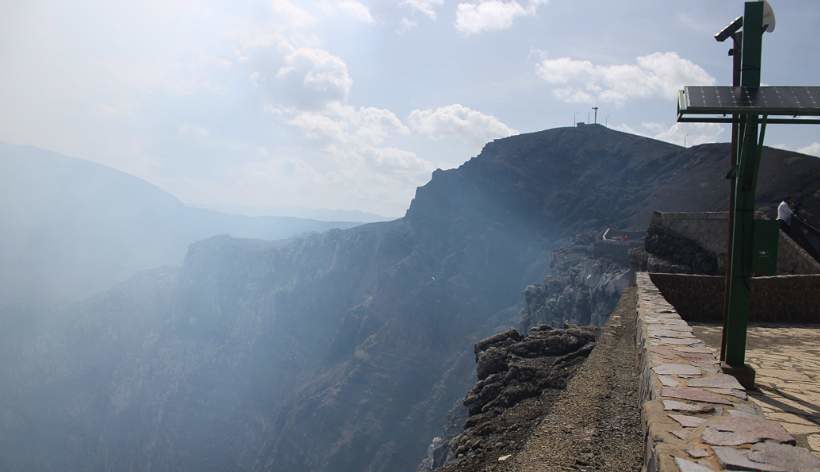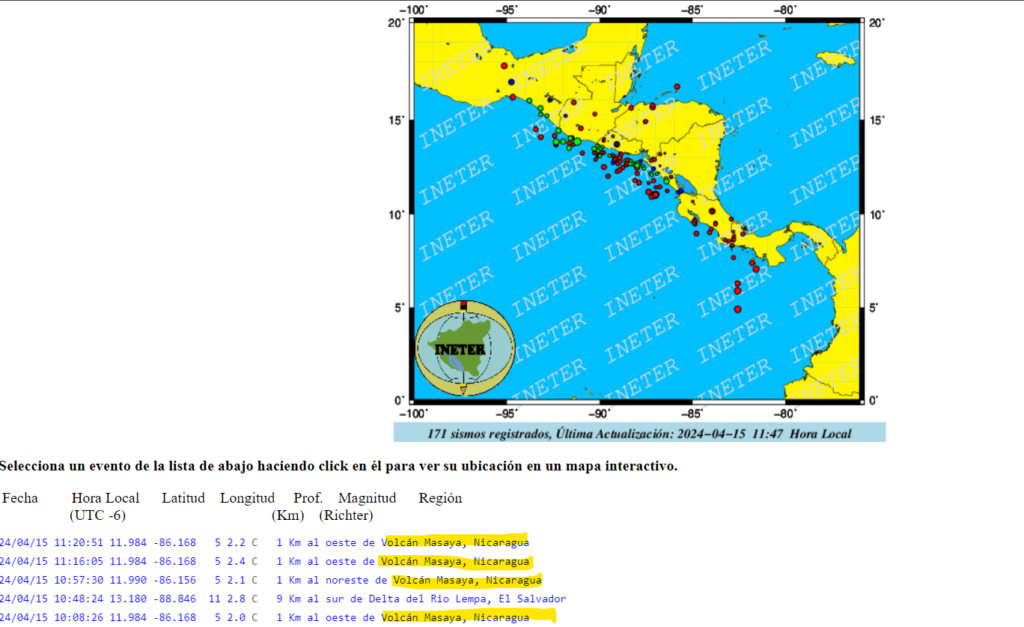Physical Address
304 North Cardinal St.
Dorchester Center, MA 02124
Physical Address
304 North Cardinal St.
Dorchester Center, MA 02124

Between 10:00 and 11:20 in the morning of Monday, April 15, four earthquakes were recorded in the Masaya Volcano National Park. According to real-time monitoring on the website of the Nicaraguan Institute of Territorial Studies (Ineter), these earthquakes had magnitudes of 2.0, 2.1, 2.2, and 2.4, all with a depth of 5 kilometers.
Rosario Murillo, in her speech this afternoon, reported that the activity occurring in the Masaya Volcano National Park is related to “a slight outflow of gases” and a “new collapse” of the southwest wall of the crater of the Santiago volcano.
Additionally, the lava lake of the Santiago volcano remains “covered with sand, ash, and rocks.”
Ineter warned, as stated by Murillo, that “there is a probability of exhalations of gases, ash, sand, and rocks” from the Santiago volcano in the Masaya Volcano National Park. However, they maintained that “the volcano’s indicators are relatively calm and, therefore, there is no danger for the general population,” as in March.
Prior to the information provided by Ineter, Seismic Alert, an organization dedicated to the dissemination of information related to natural phenomena, indicated on their social networks that the earthquakes were located in the Masaya Volcano National Park but were not caused by the movement of the magma of the Santiago volcano. They advised paying greater attention to the activity.
They also mentioned that the first earthquake recorded on April 15, at 10:08 in the morning, with a magnitude of 2.0 and a depth of 5 kilometers, was located in the Santiago crater of the Masaya Volcano National Park, which has experienced landslides and small explosions in recent months, according to Ineter.

During the weekend, videos and photos of alleged activities, such as landslides and explosions, on the Santiago volcano in the Masaya Volcano National Park circulated on social media. Agrometeorologist Agustín Moreira called on the population to avoid false information and rely on official sources like the Nicaraguan Institute of Territorial Studies (Ineter) and the National System for Disaster Prevention, Mitigation, and Attention (Sinapred).
Moreira pointed out that the volcano is currently without eruptive activity related to lava movement but cautioned that it could change as Ineter indicates. He also mentioned that landslides and seismic movements in the crater are part of normal behavior and that while there is activity in the crater, it is uncertain when an eruption may occur.
Therefore, Moreira advised the population to be cautious with the information they consume to avoid spreading false alarms. He urged people to be careful about reproducing erroneous information.
They recommend reducing the time spent and the number of people on the Masaya volcano due to the ongoing volcanic activity.



